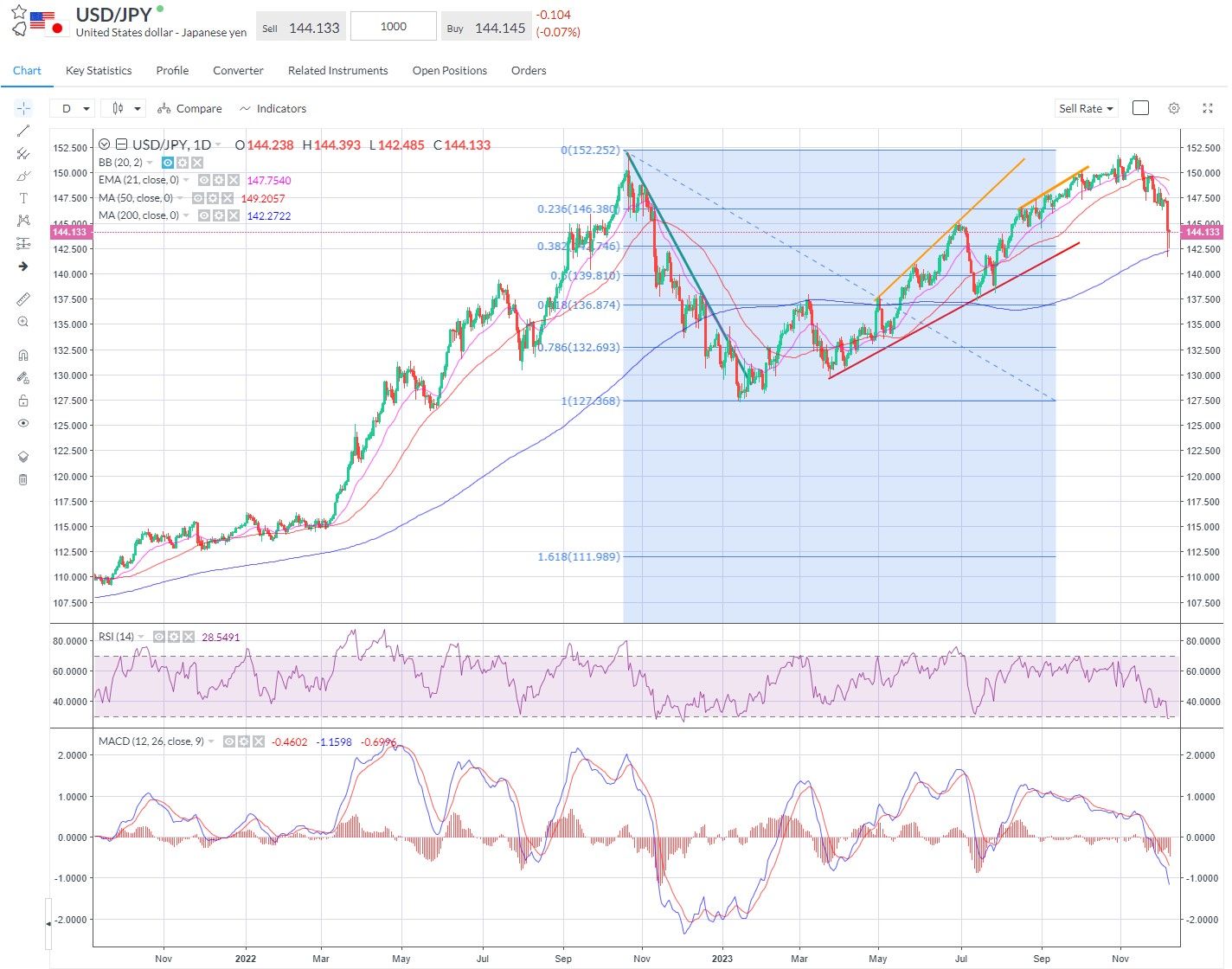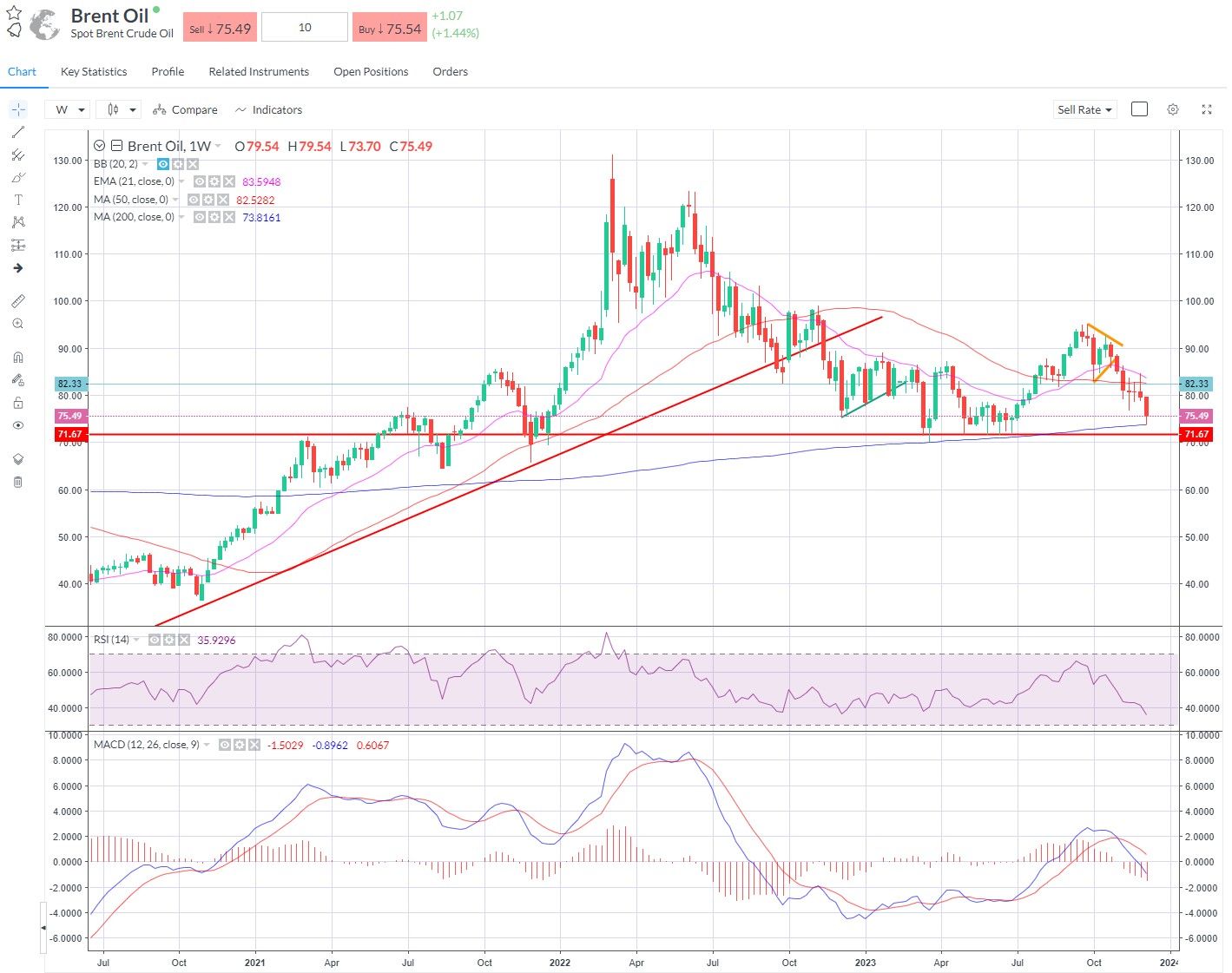
Friday Dec 8 2023 10:22

7 min

Risk is catching a bit of bid this morning as the session progresses - Equities in Europe opened a tad firmer and kicked on some more in reaction to a down day Thursday and a positive session for Wall Street to end a three-day funk. London and Frankfurt both +0.2% early doors, Paris +0.6% with luxury stocks rallying. The bond rally has stalled and stocks are looking a little bit lacking firm direction but nonfarm payrolls today should be instructive*.
US stocks rose on Thursday to end a three-day losing streak as bulls still cling to the rally, whilst the dollar gave up ground made over the same period. SPX +0.8%, Nasdaq +1.4% to erase the bulk of the week’s losses. Alphabet rose 5% after launching its Gemini AI, with chipmakers also gaining. Treasury yields remain anchored, with the 10yr below 4.20% still. Gold is chopping sideways after the Sunday night blowout still. Copper is up for a second day after three hard days down, now facing its 200-day line on the way back up. The dollar is a bit firmer this morning after a sharp fall on Thursday saw it end a three-day rally, though the yen touched a four-month high as the market bets on the BoJ tightening. Oil rallied off a 6-month low but is set for a seventh straight weekly decline – WTI futs bouncing off $69 to test $71 this morning with risk catching bid.
This week the data has been mixed – Jolts soft, ADP soft, initial and continuing claims below expectations. A month ago, the data was confirmation bias for many that the Fed is done. Nonfarm payrolls increased by 150,000 in October, whilst the previous month was revised down quite a bit. The unemployment rate edged higher to 3.9% from 3.8% in September, while annual wage inflation softened to 4.1% from 4.3%. The NFP helped cement the narrative that the Fed is not only done with hikes but may be aiming to cut soon. Today’s seen at +184k, wages +0.3% month-over-month, and unemployment at 3.9%.
The other data point of interest is the UoM December inflation expectations report. Year-ahead inflation expectations rose to 4.5% In November, up from 4.2% in October, reaching its highest reading since April 2023. Long-run inflation expectations rose from 3.0% last month to 3.2% this month, a reading last seen in 2011. Does this really matter? Inflation is clearly coming down. As Powell put it earlier this year, "the modern belief is that people's expectations about inflation actually have a real effect on inflation. If you expect inflation to go up 5% then it will," he said. Or as the IMF puts it in more academic terms, “empirical analysis uncovers an increasing role of near-term inflation expectations for inflation dynamics”.
We’ve talked about how the bottom in the market comes after the Fed starts cutting - Since 1970, the 14 Fed pivots saw equities vs bonds fall by a median -25%. And the market is just so far ahead of itself in terms of pricing cuts that it seems, given the bumper rally we’ve just had, it could be tricky and choppy heading into next week’s FOMC. Citi says recession next year, inflation to remain sticky above 2% and sees 100bps of Fed cuts.
BofA: biggest winners since Oct 27th inflection…bitcoin 30%, German DAX 16%, REITs 15%, 30-year UST 14%, EM bonds 8%…trades of leverage, duration, "peace" (better geopolitics); losers oil -18%, US dollar -2%, China stocks -3%. Does this reverse in 2024?
Macro matters, according to a new National Bureau of Economic Research (NBER) working paper from Hengjie Ai, Ravi Bansal and Hongye Guo. The findings are revealing:
“During the period 1961-2023, roughly 44 days per year with macroeconomic announcements account for more than 71% of the aggregate equity market risk compensation.”
This is tendency is called the ‘macroeconomic announcement premium’. At the daily level, the average stock market excess return is 10.68bps on announcement days and 0.93bps on days without major macroeconomic announcements, such as inflation prints and Fed decisions. And the trend is getting stronger – probably because since CBs are no longer suppressing pricing by keep rates artificially low and buying bonds. From January 2020 to August 2023, the average announcement premium was 16.33 basis points per announcement, higher than the full sample average of 10.68 basis points. h/t Alphaville for the spot.
USDJPY – yen trying to rally but coming up against 200-day line. Japan Q3 GDP fell by more than first thought, down 2.9% on an annualised basis from the 2.1% prior estimate.

Oil – down again for the week, the 200-week SMA holds – key level of support that held several times earlier this year in the spring.

*Does economic data and news affect returns and trading? Yes, is the answer – and more than you might expect.
